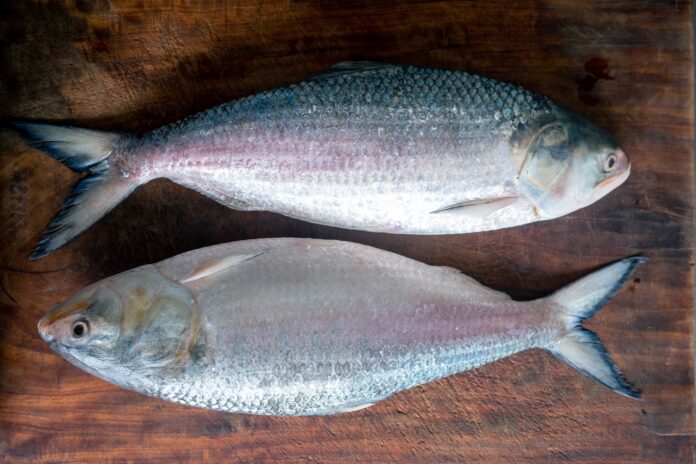Indian Scientists: As the sound of ‘dhaak’, the scent of incense and flowers, and the festive lights envelop Bengal during Durga Puja, a precious resource silently takes its leave: the hilsa. After the summer and monsoon seasons, these silvery fish, which travel in schools to the rivers, begin their journey back to the sea in October. Hilsa typically spawn in the river twice a year. Though they grow in saltwater, they seek freshwater for breeding because their eggs can’t survive in saline environments. But what if we didn’t have to wait for this seasonal migration? What if hilsa were available year-round?
This is the question that scientists at the ICAR-Central Inland Fisheries Research Institute (CIFRI) in Barrackpore are trying to answer. After years of dedicated research, the possibility of farming hilsa in ponds is on the verge of becoming a reality.
A Century-Old Dream
The idea of breeding hilsa in captivity is over a century old. As far back as 1938, Sundarlal Hora wrote in the Journal of the Indian Museum that the fish could survive and mature in enclosed bodies of water. He even conducted research on the presence of hilsa in a water treatment plant’s tanks.
According to CIFRI researchers, experiments on this possibility have been ongoing for the last 30 to 40 years. In 2012, a major collaborative project was launched with six institutions. The goal was to acclimatize river-caught hilsa to ponds, make them mature and spawn, fertilize the eggs, and complete the full lifecycle of a baby hilsa. Despite some progress, the project stalled due to a lack of funds.
In 2021, a new three-year project was initiated with funding from ICAR. Small hilsa were released into various ponds in Barrackpore, suburban Kolkata, and Kakdwip. While the male fish showed promise in breeding, the growth of the female fish was comparatively slow. While hilsa usually attain the ability to lay eggs in 1.5 to 2 years, it took longer in the ponds. Even the mature female fish were much smaller than their river-caught counterparts.
The Taste Test: No Difference in Flavor
A major concern for hilsa lovers is whether pond-farmed hilsa will have the same delicious taste as their river-dwelling cousins. To address this, researchers conducted an organoleptic test (sensory evaluation). They cooked river hilsa and pond-farmed hilsa in the same way and asked about 50 people to provide their opinions. The results were surprising: there was no significant difference in the aroma, taste, texture, or overall experience.
Scientists explain that hilsa’s distinct flavor is primarily due to fatty acids that the fish produce by consuming plankton. If the same nutrients are provided in the pond water, there will be no major difference in taste. This finding is a huge step forward for the project.
The Path Forward
Despite the recent progress, the research is once again on the brink of halting due to a lack of funding. However, the dedicated scientists are so passionate that they are continuing their experiments by purchasing fish food with their own money. They believe that another 10 to 15 years of continuous work are needed to achieve full success.
Nevertheless, the progress so far is very encouraging. If the project is fully successful, it would free us from the seasonal dependence on the hilsa’s river-to-sea migration. This means that the prized silver fish could grace Bengali kitchens not just during festive seasons, but all year round. The success of this research would be a game-changer for the fisheries industry and a dream come true for hilsa enthusiasts everywhere.
Read More: Switzerland: The World’s Only “Neutral but Powerful” Nation








[…] Read More: Indian Scientists Closer to Farming Hilsa in Ponds: A Game-Changer for Fish Lovers […]